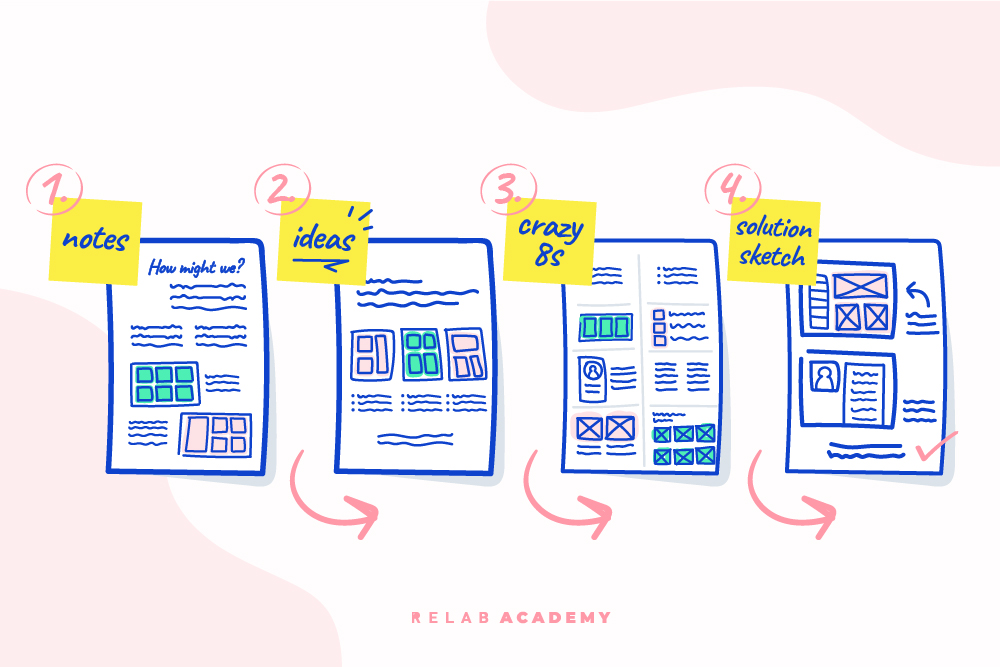Now, you’re going to start sketching a few ideas. The purpose of this isn’t to devise a final solution, it’s to get you started on a solution. Get the creative juice flowing, put on some focus music, make that cup of coffee, and draw away.
Each person is going to spend the next 20-30 minutes exploring the ideas they have in their head. By now, you’d have a good grasp of the goal and a silhouette of the solution. Doing this individually means you will have multiple ideas to choose from later.
This is when the notes you wrote in the previous session comes in handy. Sketch a few wireframes and low-fidelity drawings to convey your idea. For example, if you’re building a new shopping app for your store, draw the crucial elements and user flow such as the home page, listing page, and checkout page.

